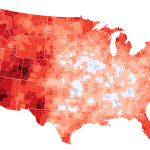**The architects of a potential Trumpian resurgence: Understanding the New Right’s influence.**
The rise of Donald Trump has undeniably reshaped the American political landscape. While the former president’s populist appeal captivated millions, a less visible yet potentially more impactful force has emerged: the “New Right,” a loosely affiliated group of intellectual figures who harbor a deep-seated skepticism, bordering on hostility, towards traditional American liberal democracy. Their influence on Trump’s past and potential future actions warrants careful examination. This group isn’t merely offering policy critiques; they are advocating for a fundamental restructuring of the American political system, viewing Trump as a potential instrument for achieving this radical transformation.
**Ideological Underpinnings and Key Figures:**
The New Right’s ideology is characterized by a profound distrust of established institutions. They perceive American liberal democracy as inherently flawed, corrupt, and in need of a complete overhaul. This sentiment isn’t rooted in traditional conservatism; instead, it draws from a complex mix of nationalist, populist, and even anti-liberal thought. While lacking a formal organizational structure, key figures such as Michael Anton, a former State Department official, exemplify this intellectual current. Anton, a prominent voice at events like the Conservative Political Action Conference (CPAC), articulates the New Right’s vision with a blend of academic rigor and unapologetic political engagement. Their writings and public pronouncements frequently challenge the legitimacy of existing power structures, advocating for a more nationalistic and arguably authoritarian alternative. The movement’s intellectual roots can be traced to various sources, including dissident strands of conservative thought and even elements of European far-right intellectual traditions.
**Assessing the New Right’s Influence and Reach:**
The extent of the New Right’s direct influence on Trump’s policies and decision-making remains a subject of debate. However, their impact on the broader conservative discourse is undeniable. They have successfully framed key political narratives, shaping the language and framing of debates around issues like immigration, national identity, and the role of government. This influence is amplified by their presence in think tanks, media outlets, and online platforms, where they reach a significant audience receptive to their message. Furthermore, their intellectual framework provides a justification for actions that might be considered outside the bounds of mainstream conservative thought, offering a theoretical underpinning for the Trumpian brand of politics. The New Right’s impact extends beyond policy; their influence reaches the very way conservatives conceptualize the political system itself.
**Implications and Future Outlook:**
The rise of the New Right presents a significant challenge to the established order within the American political landscape. Their critique of liberal democracy, coupled with their advocacy for fundamental change, necessitates a comprehensive response. Ignoring their influence would be a strategic error, as their ideas are steadily shaping the political conversation and potentially providing a blueprint for future political movements. A robust counter-narrative is crucial, one that addresses the legitimate concerns underlying their critiques while simultaneously rejecting their potentially destructive proposals. The future of American politics will likely be significantly impacted by the ongoing struggle between the New Right’s vision and the forces that seek to preserve and reform traditional liberal democratic principles. Understanding the New Right’s intellectual underpinnings and political strategies is crucial for navigating the complexities of the contemporary American political landscape.
Based on materials: Vox





